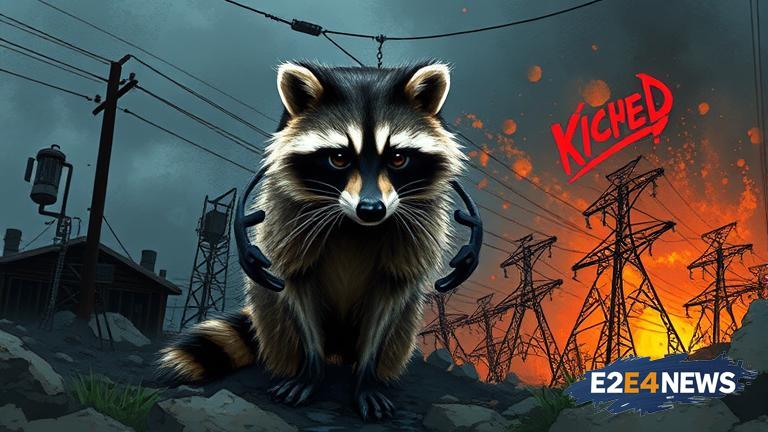In a bizarre incident that has left many scratching their heads, a raccoon has been identified as the culprit behind a recent multistate power outage. The outage, which affected several states, was caused by the raccoon’s unfortunate encounter with a critical component of the power grid. According to reports, the raccoon had wandered into a substation, where it came into contact with a high-voltage electrical line. The resulting short circuit triggered a chain reaction, leading to a widespread power outage that affected thousands of households and businesses. The incident has raised concerns about the vulnerability of the power grid to wildlife-related disruptions. As the investigation into the incident continues, officials are working to determine the exact circumstances surrounding the raccoon’s entry into the substation. It is believed that the raccoon may have gained access to the facility through a hole or gap in the fencing. The power outage, which lasted for several hours, caused significant disruptions to daily life, with many residents and businesses forced to rely on backup generators or alternative sources of power. The incident has also highlighted the importance of wildlife-proofing critical infrastructure, such as power substations and transmission lines. In recent years, there have been several instances of wildlife-related power outages, including incidents involving birds, squirrels, and other animals. These incidents have resulted in significant economic losses and disruptions to essential services. As the population of urban areas continues to grow, the risk of wildlife-related disruptions to critical infrastructure is likely to increase. To mitigate this risk, utilities and infrastructure operators are being encouraged to implement wildlife-deterrent measures, such as fencing, netting, and other forms of protection. The use of advanced technologies, such as motion sensors and cameras, can also help to detect and prevent wildlife-related incidents. In addition to the economic and social impacts, the incident has also raised concerns about the welfare of the raccoon involved. Fortunately, the raccoon was not injured in the incident, and it is believed to have escaped without harm. The incident has sparked a wider debate about the need for greater awareness and education about the importance of wildlife conservation and the prevention of human-wildlife conflicts. As the investigation into the incident continues, officials are working to identify measures that can be taken to prevent similar incidents in the future. This may include the implementation of additional safety measures, such as fencing and netting, as well as public education campaigns to raise awareness about the importance of wildlife conservation. The incident has also highlighted the need for greater collaboration and coordination between utilities, infrastructure operators, and wildlife conservation agencies. By working together, these organizations can help to reduce the risk of wildlife-related disruptions to critical infrastructure and promote a safer and more sustainable coexistence between humans and wildlife. In conclusion, the recent multistate power outage caused by a raccoon has highlighted the unpredictable nature of wildlife interactions with human infrastructure. As the population of urban areas continues to grow, the risk of wildlife-related disruptions to critical infrastructure is likely to increase, making it essential to implement wildlife-deterrent measures and promote greater awareness and education about the importance of wildlife conservation.





